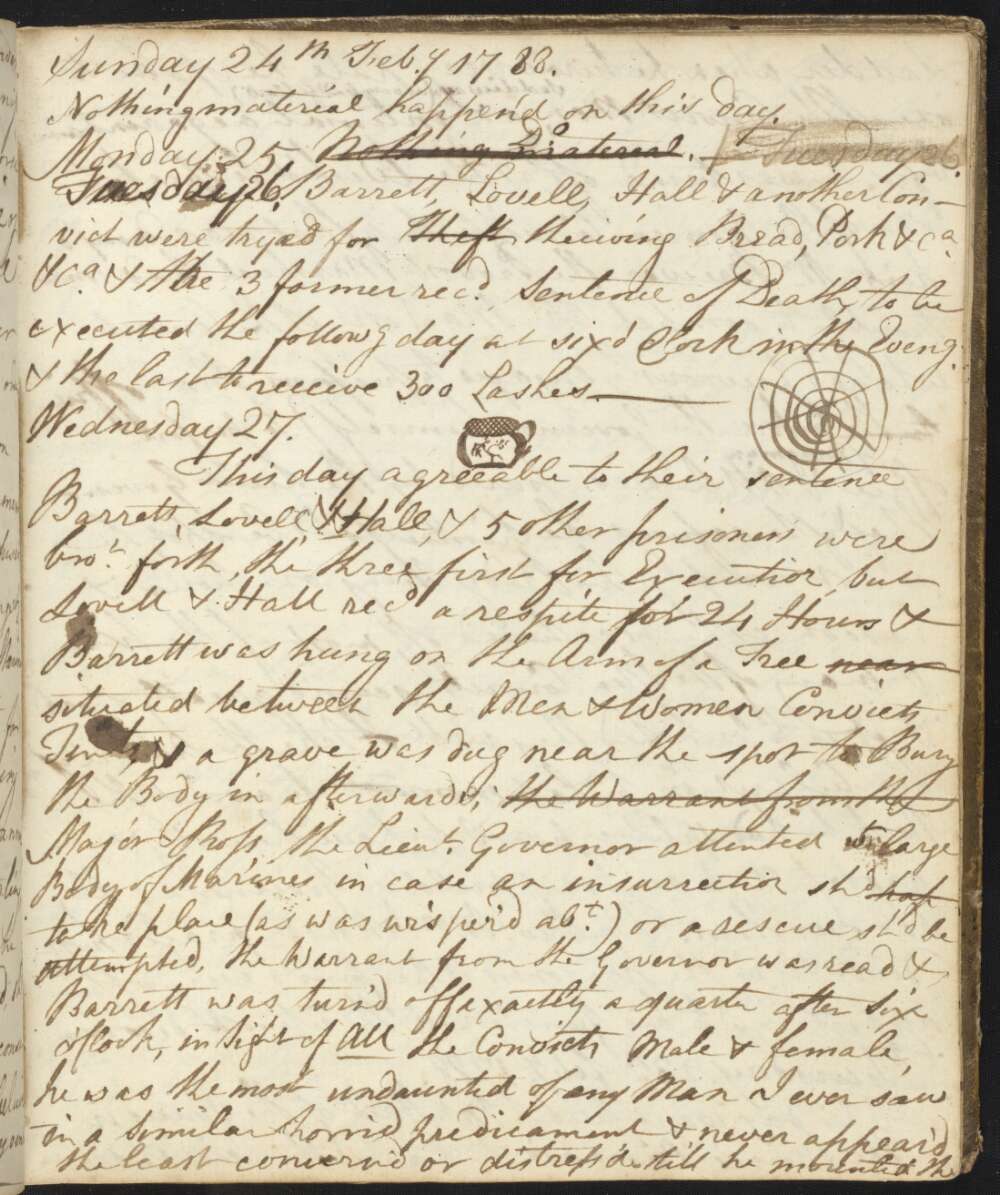The Dictionary of Sydney was archived in 2021.
Description of the trial and execution of Thomas Barrett in Arthur Bowes Smyth's journal, February 1788

Contributed By
(from Journal of Arthur Bowes Smyth, 1787 March 22-1789 August)

